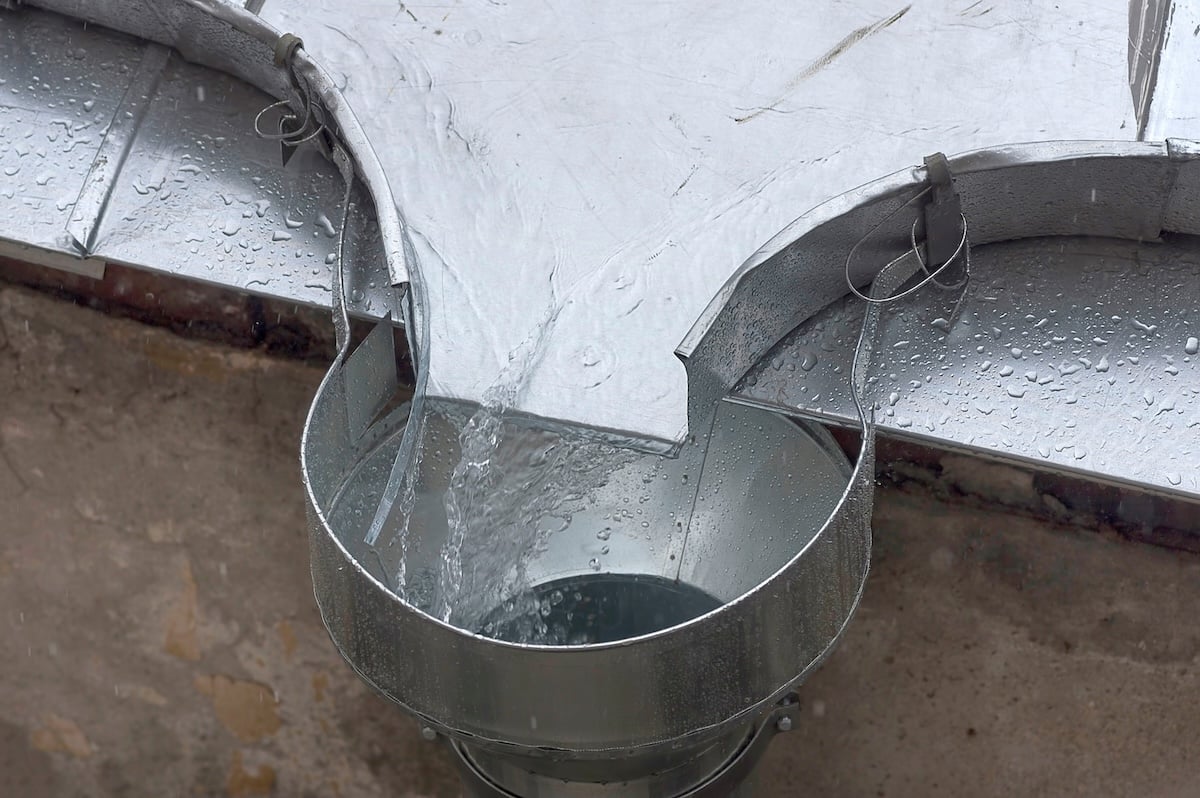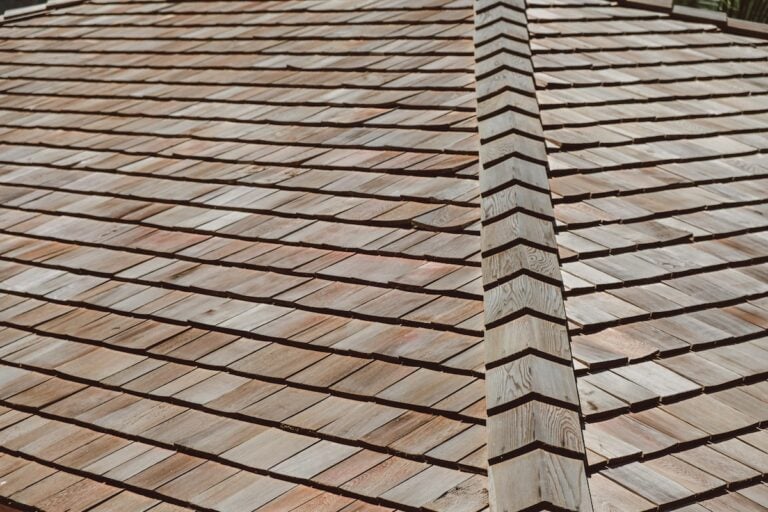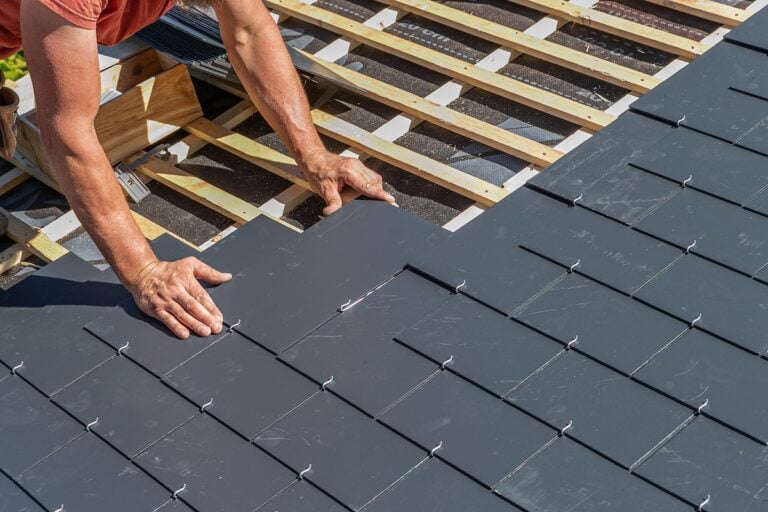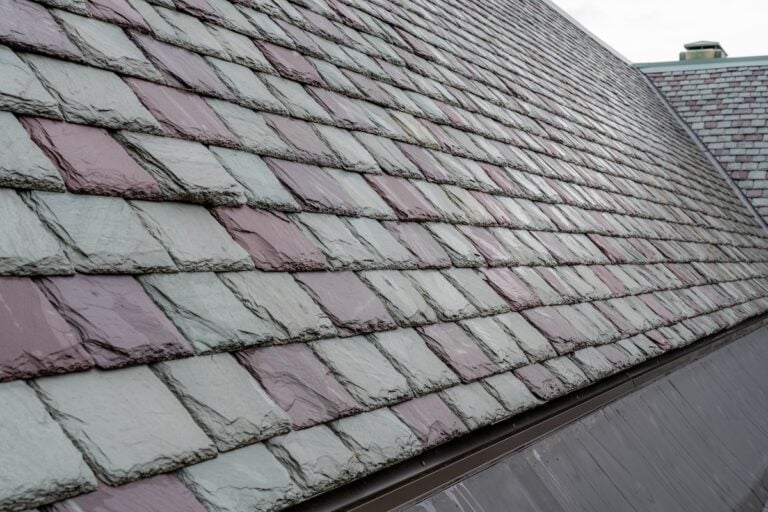Choosing the right roof drain system is critical for protecting your home or building from water damage. Whether you’re working on a residential project or designing a commercial roof, your drain setup determines how efficiently rainwater is removed from your roof structure.
- Prevents costly water damage: A good drainage system reduces the risk of leaks, rot, and foundation issues.
- Essential for flat and low-slope roofs: Roof drains help manage standing water that can degrade roofing materials.
- Multiple options available: There are several types of drains to fit different roof designs, climates, and budgets.
In this guide, we’ll walk you through the main types of roof drains, the drain accessories that support them, and how to choose the right solution for your next roofing project.
❗️ Why Roof Drainage Matters
Proper roof drainage is one of the most important aspects of maintaining your home or building. Without an effective drainage plan, rainwater can pool and lead to roof leaks, mold growth, wood rot, and even structural damage. Without effective drainage, standing water often leads to leaks and even exterior issues like preventing mold on siding.
Even pitched roofs need support to move water off the structure and away from the foundation. But on flat or low-slope roofing systems—especially green roof drains—drainage is a primary concern that requires the right system and components.
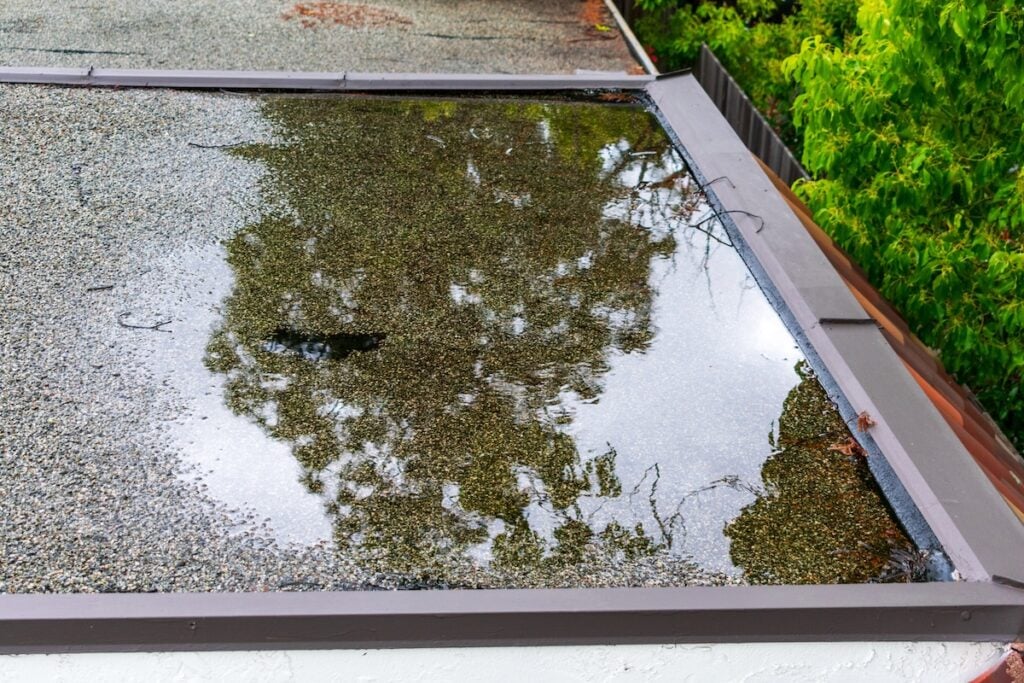
⛈️ Types of Roof Drain Systems
Each roof drain type is designed for specific conditions, building sizes, and roof designs. Here are the most common options used in residential and commercial roof systems.
1. Gutters and Downspouts
- Best for: Pitched residential roofs
- How it works: Gutters catch rainwater and direct it through downspouts away from your foundation.
- Benefits: Easy to install, budget-friendly, and customizable in shape and material
- Challenges: Prone to clogging with leaves and debris without regular maintaining or gutter guards
2. Scupper Drains
Scuppers are especially popular for flat and low-slope systems, making them a go-to choice for commercial roofing in Arlington.
- Best for: Flat and low-slope roofs, especially in commercial roof settings
- How it works: Scuppers are openings at the roof edge that allow water to drain into collector boxes or downspouts
- Benefits: Simple design, low maintenance, and effective drainage for large surfaces
- Challenges: Blockages can occur without proper drain accessories like screens or guards

3. Internal Roof Drains
Large commercial buildings often rely on internal drains, but they require consistent upkeep—something we cover in our guide on roof drain maintenance tips.
- Best for: Large flat-roof commercial buildings
- How it works: Water flows to internal drain inlets and exits through concealed piping inside the building
- Benefits: Prevents freeze-related clogs, keeps drainpipes out of view, and handles high water volume
- Challenges: Higher price point and more complex installation compared to other systems
4. Siphonic Roof Drains
- Best for: Commercial roof applications with high rainfall volumes
- How it works: Creates negative pressure to rapidly pull rainwater through narrow, horizontal piping
- Benefits: Reduces the number of required drains and offers extremely effective drainage
- Challenges: Must be engineered precisely, making it less common for smaller projects
5. Overflow Drains
- Best for: Flat roofs as a secondary line of defense
- How it works: Kicks in if the main roof drain system is clogged or overwhelmed
- Benefits: Provides emergency relief to prevent rooftop flooding
- Challenges: Only effective when paired with a primary drain system
👉 Don’t Overlook Drain Accessories
The performance of any roof drain system depends heavily on the quality and setup of its accessories. These products may seem minor, but they help extend system life, prevent clogs, and support consistent water flow.
- Strainers: Prevent leaves, debris, and small animals from entering drains
- Clamping rings: Secure the drain to the roofing membrane for a watertight fit
- Deck plates: Create a secure surface for mounting roof drains on flat roofs
- Heated coils: Used in cold climates to melt ice and keep water moving during winter
Choosing the right drain accessories ensures that your drainage system functions properly and lasts longer with minimal maintenance.
🤔 Factors to Consider When Choosing a Roof Drain System
With several options available, it’s important to match the system to your structure, climate, and budget. Here’s how to find the right solution for your specific needs.
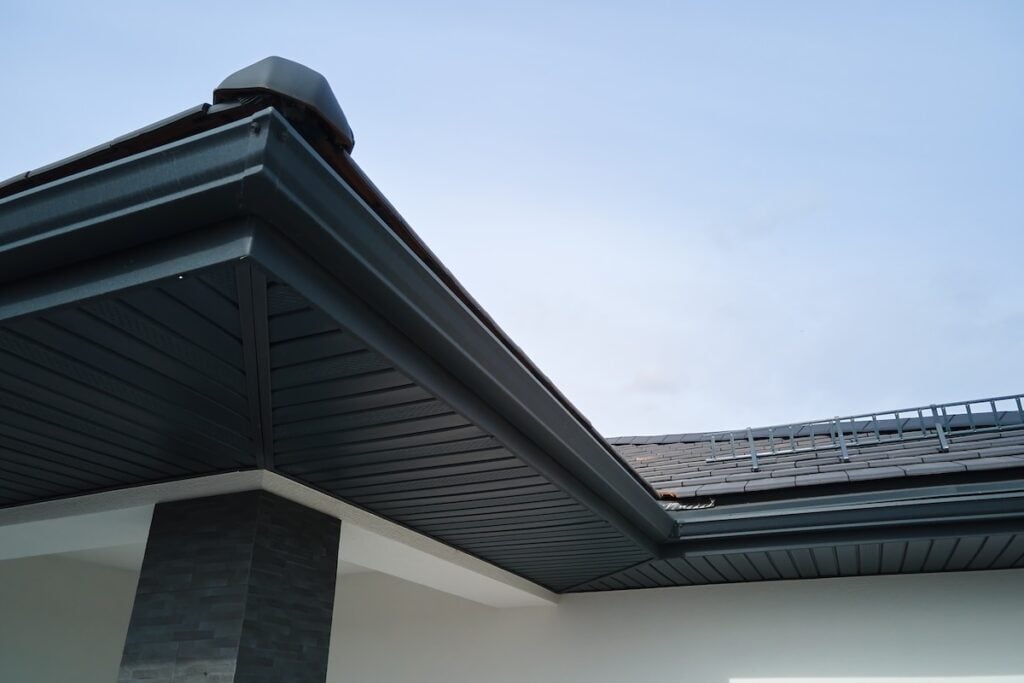
Roof Design and Pitch
Pitched roofs do well with standard gutters and downspouts. But for any low-slope or flat roof, internal drains, scuppers, or siphonic systems will offer better water control.
Green roof drains are also becoming more popular for environmentally friendly homes and buildings, offering built-in layers that promote natural filtration alongside rainwater control.
Building Size and Usage
Larger buildings require more advanced drainage systems. A commercial roof, for example, typically demands internal or siphonic drainage for efficiency and code compliance. Residential homes can often use simpler setups with proper slope and overflow protection. In storm-prone regions, planning your system alongside storm damage repairs in Alexandria ensures long-term protection.”
Local Rainfall and Debris Load
If your area sees frequent storms or falling leaves, consider adding strainers, gutter guards, and overflow drains to handle excess water and prevent blockages.
Installation Price and Maintenance Needs
Some systems have a lower up-front price but higher long-term maintenance costs. Others—like siphonic and internal drains—may cost more to install but require less cleaning and last longer when maintained correctly.
⏰ How to Extend the Life of Your Roof Drain System
Maintaining your roof and drainage system is key to getting the most out of your investment. Here’s how to keep things flowing smoothly:
- Schedule seasonal inspections: Especially before and after major storms. Pairing seasonal inspections with quality gutters installation in Fairfax can significantly improve your drainage performance.
- Remove debris regularly: Leaves, twigs, and even roof material granules can collect near drains and scuppers
- Check connections and seals: Look for signs of rust, cracks, or loose fittings
- Upgrade when reroofing: If you’re replacing your roof, it’s the perfect time to modernize your drain system
- Consider smart upgrades: New product innovations like heated drains or overflow alarms help you stay ahead of issues.

📞 When to Call the Pros
While some drainage issues are DIY-friendly, complex systems or commercial roof structures should always be evaluated by a roofing contractor. Improper installation or missed issues can lead to thousands in water damage repairs.
At Springfield Roofing & Sheet Metal, we offer expert assessments, installations, and product recommendations for all types of roof drain systems. Whether you’re outfitting a home, a green roof, or a commercial facility, we’ll help you find the right solution.
💧 Don’t Let Drainage Be an Afterthought
An effective drainage system is the unsung hero of a healthy roof. From affordable gutter systems to engineered siphonic drains, there’s a solution for every building type and budget. With the right product choice and ongoing maintenance, your roof will shed water efficiently and stay strong for years to come.
Springfield Roofing & Sheet Metal is your trusted partner for drainage upgrades, inspections, and expert recommendations. Contact us today to learn more about your roof drain options and ensure your home or building stays dry, damage-free, and protected.


